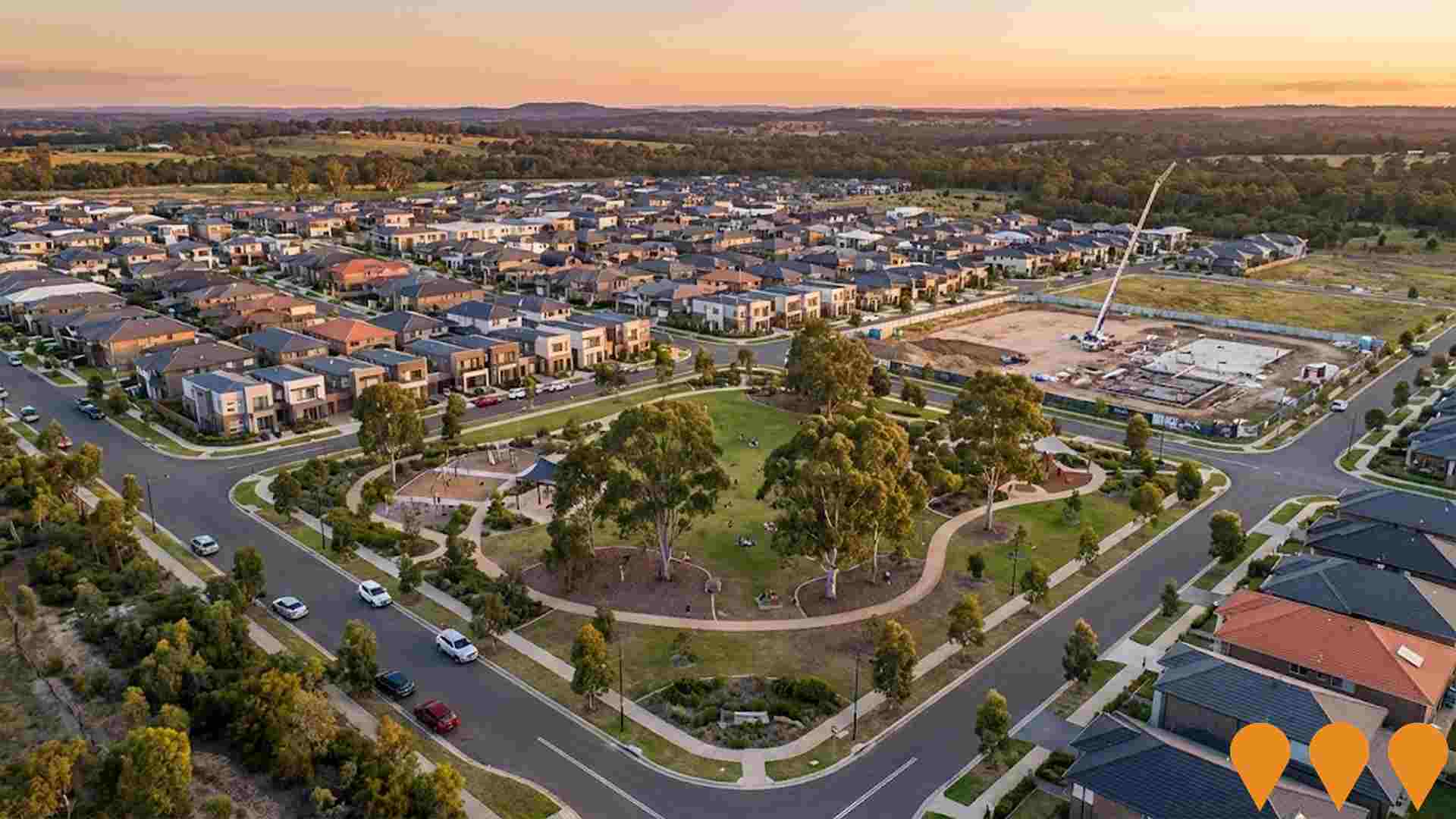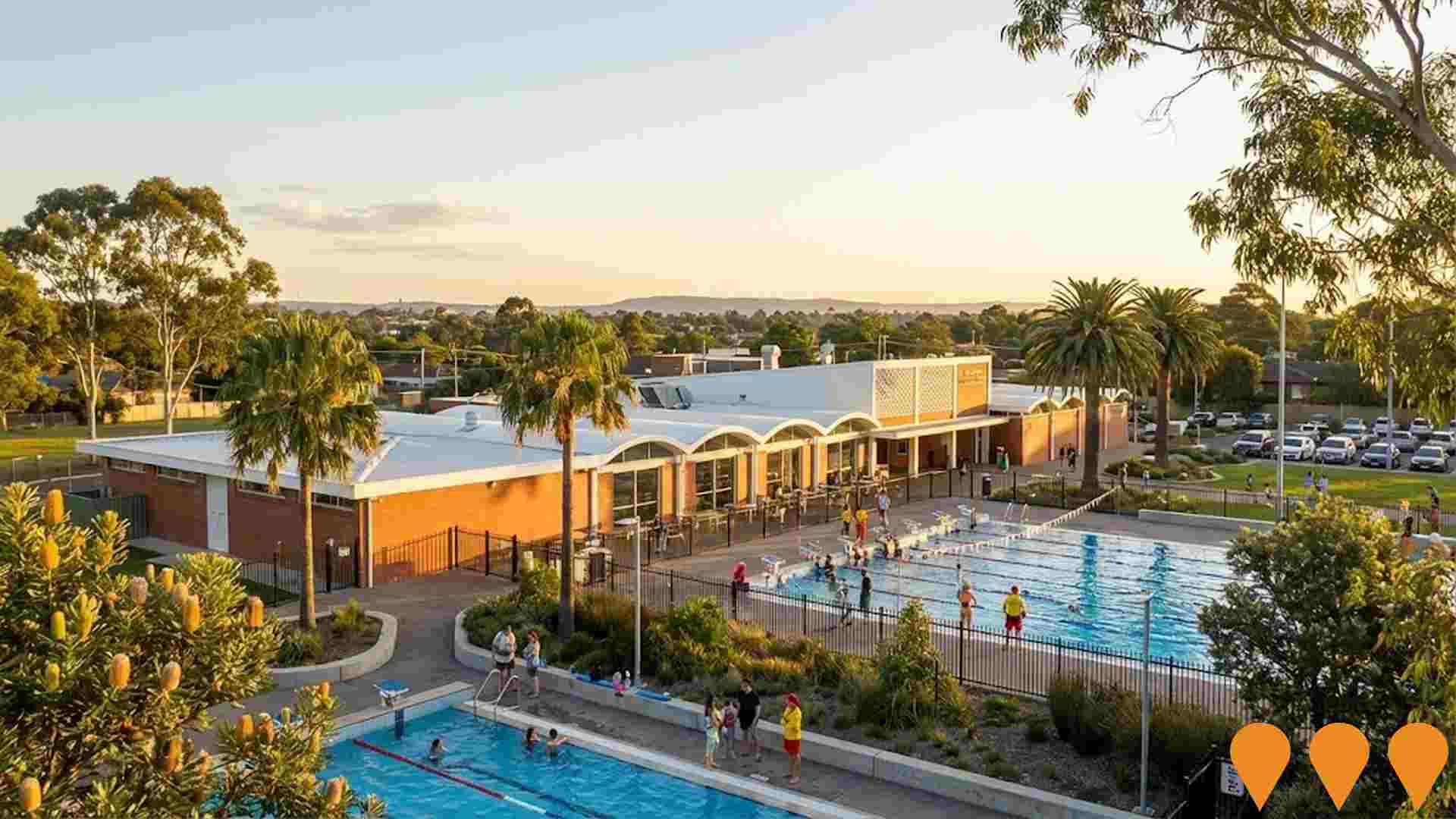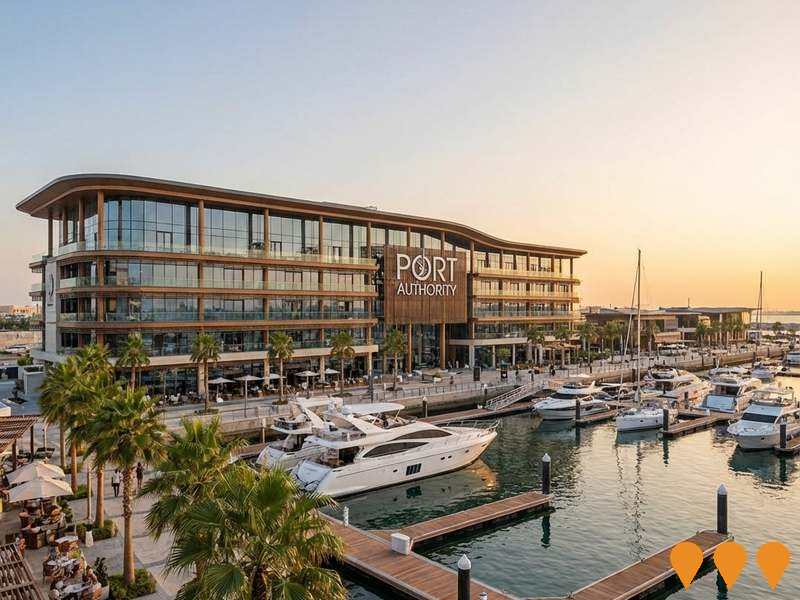Chart Color Schemes
est. as @ -- *
ABS ERP | -- people | --
2021 Census | -- people
Sales Activity
Curious about local property values? Filter the chart to assess the volume and appreciation (including resales) trends and regional comparisons, or scroll to the map below view this information at an individual property level.
Find a Recent Sale
Sales Detail
Population
Population growth drivers in Blacktown - West are strong compared to national averages based on AreaSearch's ranking of recent, and medium to long-term trends
Blacktown - West's population was approximately 17,993 as of August 2025. This figure reflects a growth of 852 people, representing a 5.0% increase since the 2021 Census, which reported a population of 17,141. The change is inferred from the estimated resident population of 17,786 in June 2024 and an additional 243 validated new addresses since the Census date. This results in a population density ratio of 3,844 persons per square kilometer, placing Blacktown - West among the top 10% of national locations assessed by AreaSearch, indicating high demand for land in the area. The 5.0% growth rate since the 2021 Census exceeded the SA3 area's average growth of 3.9%, positioning Blacktown - West as a growth leader in the region. Overseas migration accounted for approximately 80.5% of overall population gains during recent periods, driving primary growth in the area.
AreaSearch is adopting ABS/Geoscience Australia projections for each SA2 area, released in 2024 with a base year of 2022. For areas not covered by this data, AreaSearch utilises NSW State Government's SA2 level projections, released in 2022 with a base year of 2021. Growth rates by age group from these aggregations are applied to all areas for years 2032 to 2041. Future population trends indicate an above median growth is projected for the area, with an expected increase of 2,694 persons by 2041 based on latest population numbers, reflecting a total increase of 13.8% over the 17-year period.
Frequently Asked Questions - Population
Development
Recent residential development output has been above average within Blacktown - West when compared nationally
Blacktown-West has seen approximately 158 dwelling approvals annually over the past five financial years, totalling 794 homes. As of FY26, 19 approvals have been recorded. The average new resident per year per dwelling constructed between FY21 and FY25 is 0.5, suggesting that construction pace matches or exceeds demand. The average construction cost of new homes is $314,000, below regional norms, indicating more affordable housing options.
This financial year has seen $3.6 million in commercial approvals, reflecting limited commercial development focus. Compared to Greater Sydney, Blacktown-West has 56.0% more building activity per person. New building activity comprises 65.0% detached houses and 35.0% townhouses or apartments, offering a mix of medium-density options across price brackets. With around 276 people per dwelling approval, the area exhibits low density characteristics.
By 2041, Blacktown-West is projected to grow by 2,487 residents. Current construction levels should adequately meet demand, creating favourable buying conditions and potentially enabling growth beyond current forecasts.
Frequently Asked Questions - Development
Infrastructure
Blacktown - West has very high levels of nearby infrastructure activity, ranking in the top 20% nationally
Changes in local infrastructure significantly affect an area's performance. AreaSearch has identified 13 projects that may impact this region. Notable initiatives include the expansions of Blacktown and Mount Druitt Hospitals Stage 2, Blacktown City Council's WestInvest Program, St Maurice Village development, and Dara Blacktown project. The following list details those expected to have the most relevance.
Professional plan users can use the search below to filter and access additional projects.
INFRASTRUCTURE SEARCH
 Denotes AI-based impression for illustrative purposes only, not to be taken as definitive under any circumstances. Please follow links and conduct other investigations from the project's source for actual imagery. Developers and project owners wishing us to use original imagery please Contact Us and we will do so.
Denotes AI-based impression for illustrative purposes only, not to be taken as definitive under any circumstances. Please follow links and conduct other investigations from the project's source for actual imagery. Developers and project owners wishing us to use original imagery please Contact Us and we will do so.
Frequently Asked Questions - Infrastructure
Blacktown and Mount Druitt Hospitals Stage 2 Expansion
NSW Government $120 million Stage 2 expansion delivering 60 additional inpatient beds (30 at Blacktown Hospital and 30 at Mount Druitt Hospital), expanded clinical and non-clinical support spaces, new ambulatory care and outpatient areas, and improved emergency department capacity to meet growing demand in Western Sydney.

Blacktown Quarter
Walker Corporation's $2+ billion mixed-use urban renewal precinct in Blacktown CBD. Features premium commercial offices, a new private hospital (Blacktown Private Hospital), education and health research facilities, retail and dining precincts, and Sydney's largest new public domain. The masterplan delivers significant civic upgrades, improved connectivity to Blacktown Station, and over 5 hectares of new open space.
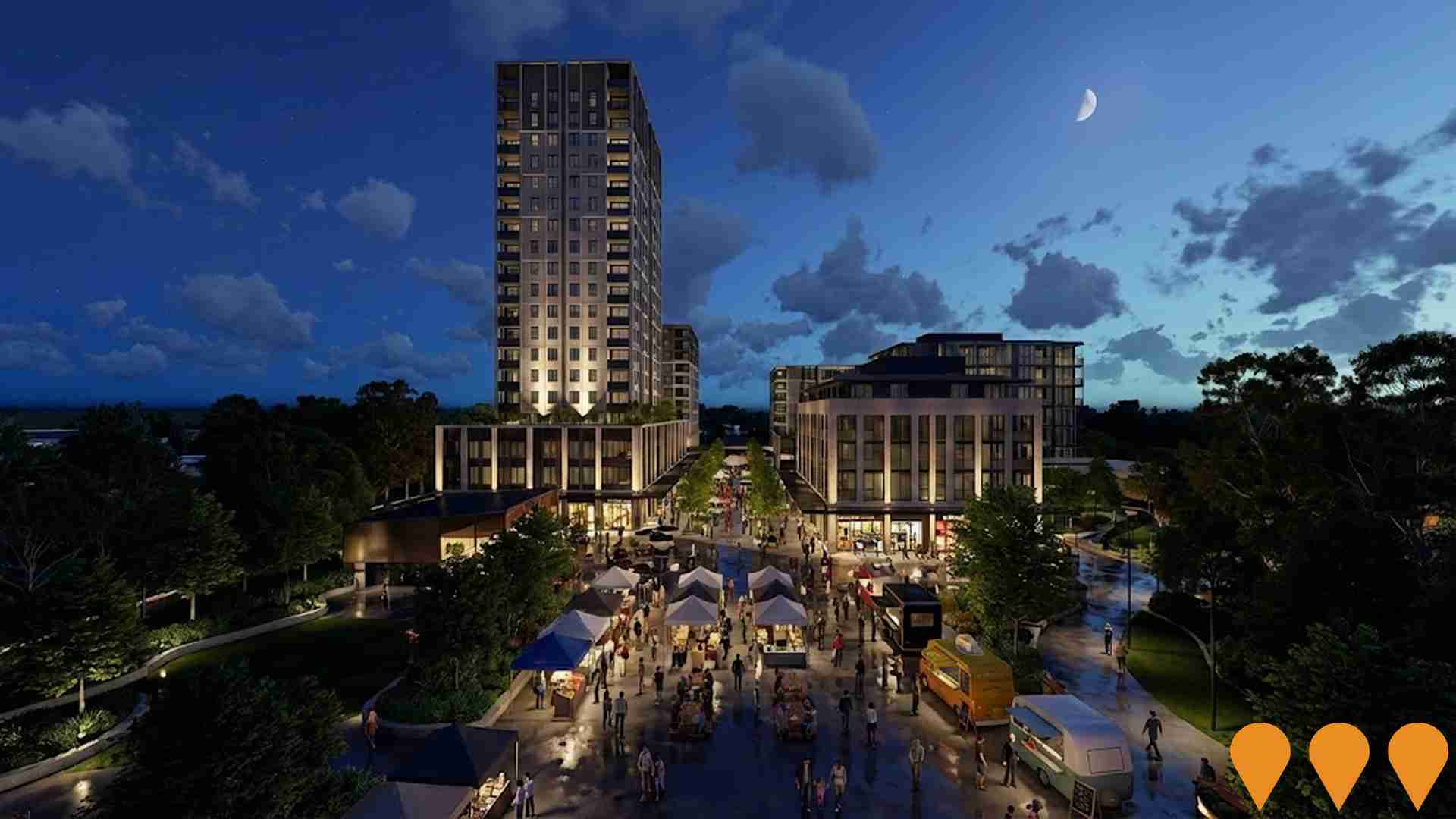
Blacktown and Mount Druitt Hospitals Expansion Stage 2
Stage 2 expansion and redevelopment of Blacktown and Mount Druitt Hospitals delivering a new clinical services building at Blacktown Hospital with approximately 200 additional inpatient beds, expanded emergency department, new operating theatres, interventional suites, medical imaging, ambulatory care, and paediatric services. Mount Druitt Hospital receives satellite upgrades including expanded cancer and renal services. Part of a $1.1 billion total investment across both stages (Stage 1 completed 2022).

Blacktown City Council WestInvest Program
Blacktown City Council is delivering a $150 million portfolio of community infrastructure projects funded through the NSW Government's WestInvest program. Projects include new and upgraded sports facilities, parks, community centres, libraries, aquatic facilities, cycleways and road upgrades across the entire Blacktown Local Government Area to meet the needs of one of Australia's fastest-growing communities.
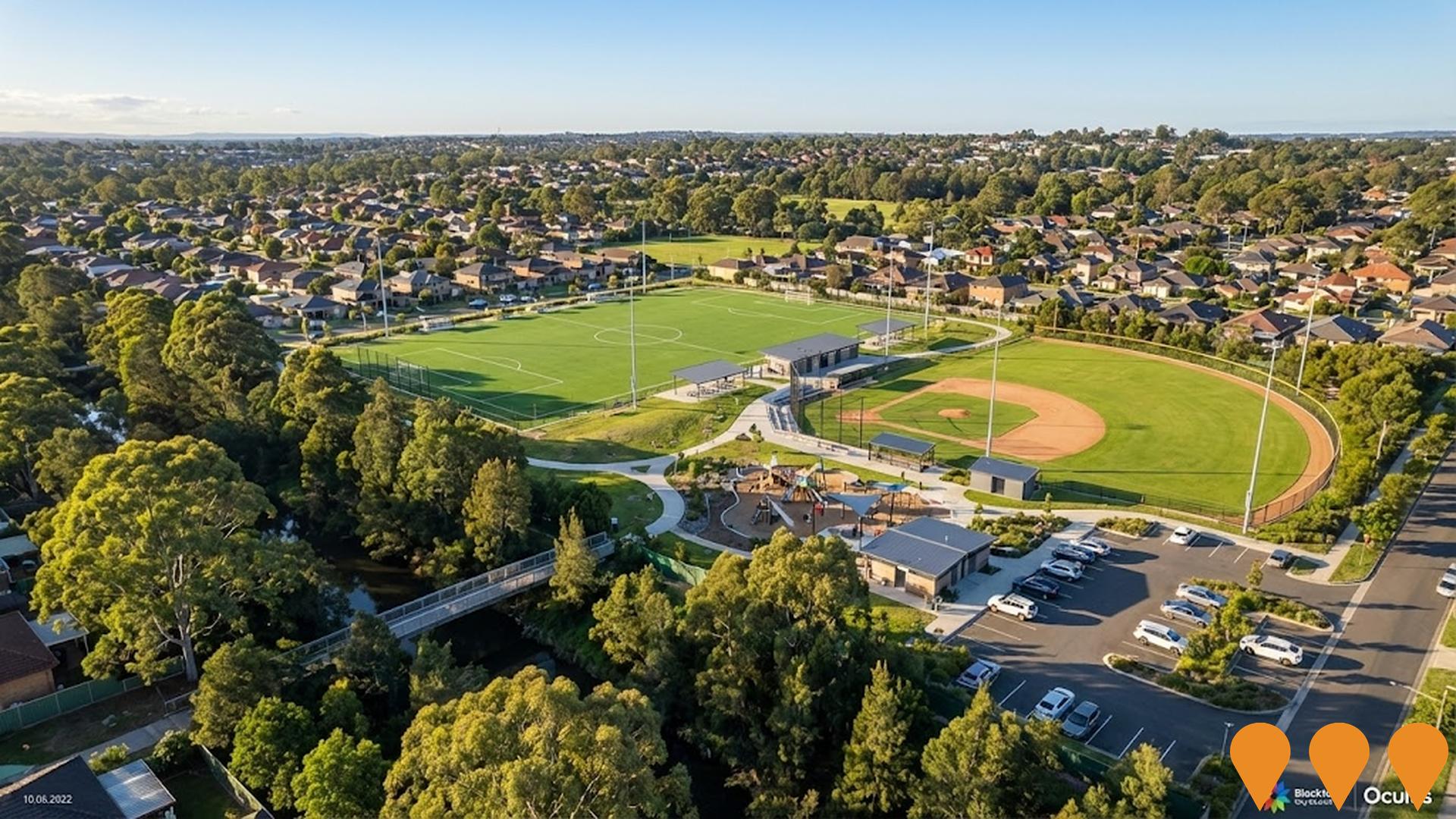
Richmond Road Upgrade M7 to Townson Road
Major road upgrade widening 2.2km of Richmond Road to six lanes with new flyover bridge, improving traffic flow for 89,000 daily vehicles.

Warrick Lane Precinct Redevelopment
Completed $76.5 million redevelopment of the Warrick Lane precinct featuring a 482-space four-level underground car park, public plazas, two tree-lined parks, children's play equipment, street furniture, commercial buildings, and Indigenous artworks. The project has transformed Blacktown CBD into a modern metropolitan center with enhanced community amenities and cultural connections to the traditional Darug lands.

Woodcroft Neighbourhood Centre Renewal
Major upgrade and expansion of the existing Woodcroft Neighbourhood Centre including a new community hall, library expansion, youth space, and improved public domain with new playground and landscaping.
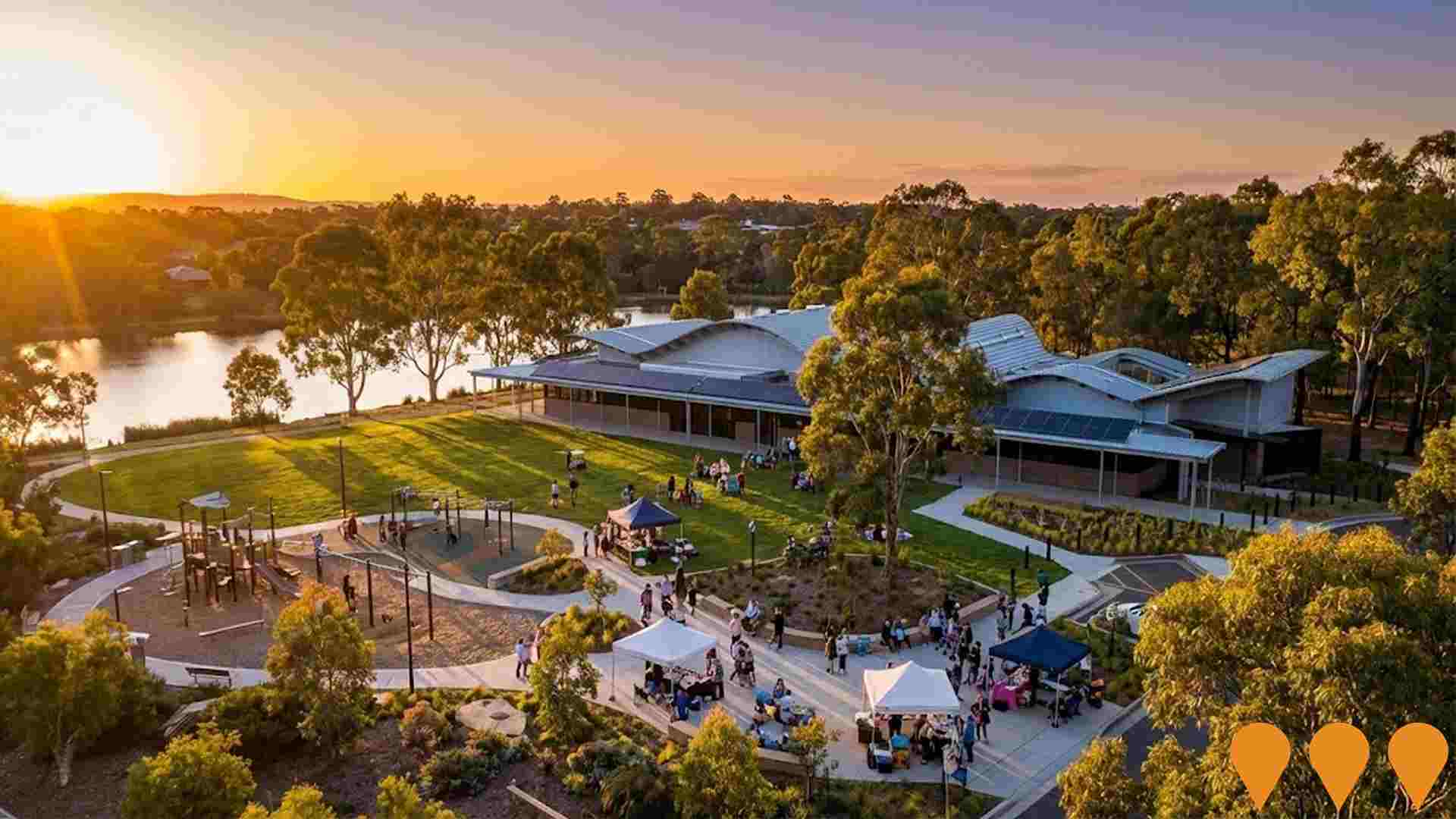
LOGOS Eastern Creek Logistics Estate
A 26.7 hectare multi-tenant logistics estate on Archbold Road in Eastern Creek, delivering more than 95,000 sqm of modern warehouse and distribution space with strong access to the M4 and M7. The project has progressed with Lot 3 detailed design approval and construction works underway on initial tenancies, aligning with the developer's ESG targets.
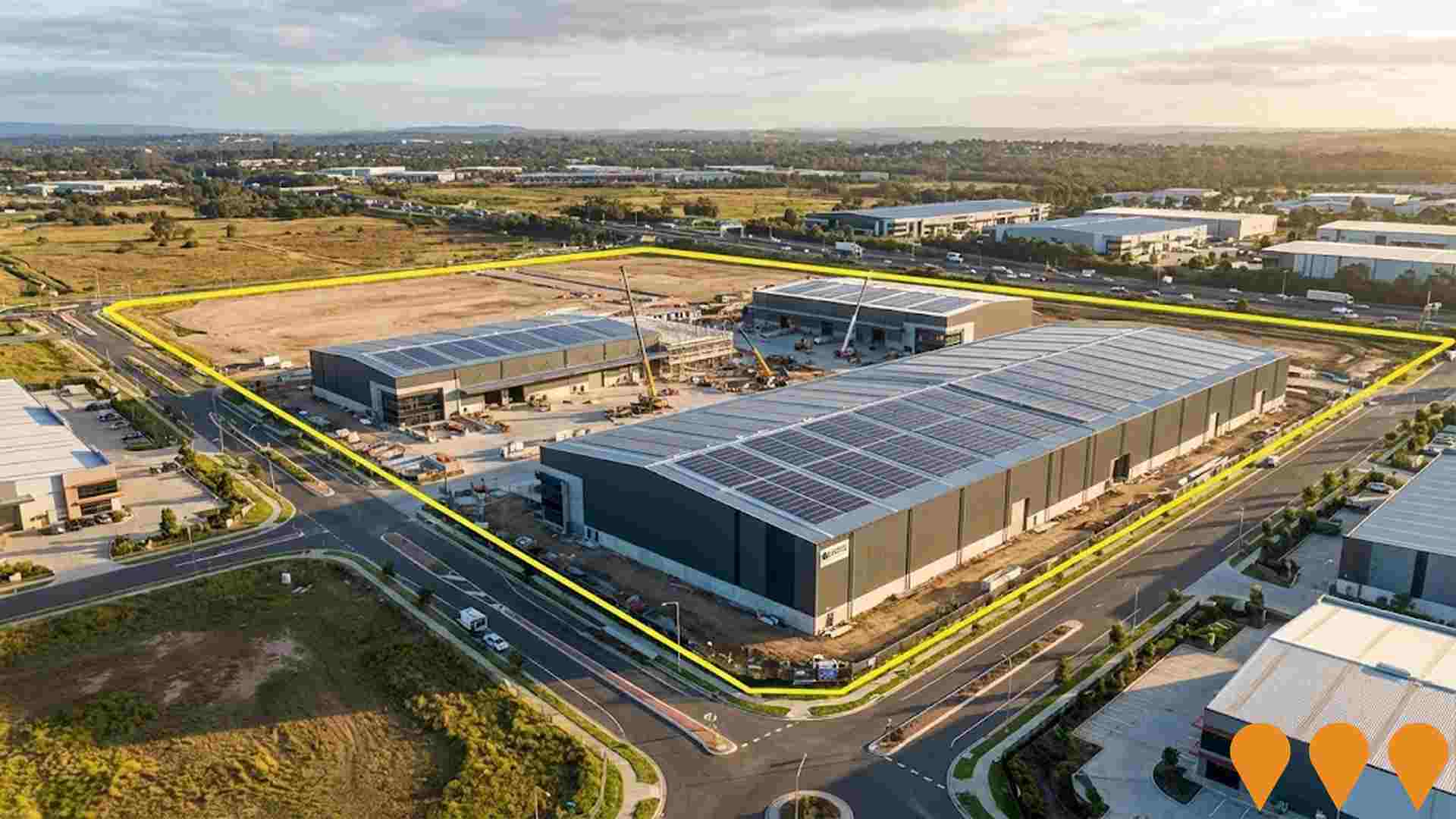
Employment
Employment conditions in Blacktown - West remain below the national average according to AreaSearch analysis
Blacktown - West has an unemployment rate of 5.3% as of June 2025, with estimated employment growth of 6.0% over the past year. It has a workforce participation rate of 56.1%, which is below Greater Sydney's rate of 60.0%.
The area has 9,741 residents in work, with an unemployment rate 1.1% higher than Greater Sydney's rate of 4.2%. Employment is concentrated in health care & social assistance, transport, postal & warehousing, and retail trade. Transport, postal & warehousing shows strong specialization at 2.1 times the regional level, while professional & technical has lower representation at 6.0% compared to the regional average of 11.5%. Over the year to June 2025, employment increased by 6.0% and labour force by 6.5%, causing unemployment to rise by 0.4 percentage points.
In comparison, Greater Sydney recorded employment growth of 2.6% and labour force growth of 2.9%, with unemployment rising by 0.3 percentage points. Jobs and Skills Australia's national employment forecasts from May 2025 project national employment growth of 6.6% over five years and 13.7% over ten years, but growth rates vary significantly between industry sectors. Applying these projections to Blacktown - West's employment mix suggests local growth of approximately 6.4% over five years and 13.4% over ten years.
Frequently Asked Questions - Employment
Income
Income levels align closely with national averages, indicating typical economic conditions for Australian communities according to AreaSearch analysis
Blacktown - West has a median taxpayer income of $49,856 and an average income of $57,054 according to the latest postcode level ATO data aggregated by AreaSearch for financial year 2022. This is lower than the national average, with Greater Sydney having a median income of $56,994 and an average income of $80,856. As of September 2025, estimated incomes are approximately $56,143 (median) and $64,249 (average), based on Wage Price Index growth of 12.61% since financial year 2022. According to census data, household income ranks at the 56th percentile ($1,857 weekly), while personal income is at the 39th percentile. The $1,500 - 2,999 earnings band includes 38.8% of the community (6,981 individuals), which aligns with broader trends across regional levels showing 30.9% in the same category. High housing costs consume 17.8% of income, but strong earnings place disposable income at the 55th percentile. The area's SEIFA income ranking places it in the 4th decile.
Frequently Asked Questions - Income
Housing
Blacktown - West is characterized by a predominantly suburban housing profile, with above-average rates of outright home ownership
The dwelling structure in Blacktown - West, as per the latest Census evaluation, consisted of 77.6% houses and 22.4% other dwellings (semi-detached, apartments, 'other' dwellings). This compares to Sydney metro's 76.8% houses and 23.3% other dwellings. Home ownership in Blacktown - West was at 25.9%, with the remaining dwellings either mortgaged (35.7%) or rented (38.4%). The median monthly mortgage repayment in the area was $2,100, below Sydney metro's average of $2,167. The median weekly rent figure was recorded at $410, compared to Sydney metro's $400. Nationally, Blacktown - West's mortgage repayments are higher than the Australian average of $1,863, while rents exceed the national figure of $375.
Frequently Asked Questions - Housing
Household Composition
Blacktown - West features high concentrations of group households and family households, with a higher-than-average median household size
Family households constitute 77.7% of all households, including 41.2% couples with children, 21.8% couples without children, and 12.8% single parent families. Non-family households account for the remaining 22.3%, with lone person households at 18.1% and group households comprising 4.3%. The median household size is 3.0 people, which is larger than the Greater Sydney average of 2.9.
Frequently Asked Questions - Households
Local Schools & Education
Educational attainment in Blacktown - West aligns closely with national averages, showing typical qualification patterns and performance metrics
Educational qualifications in Blacktown as of 2021 show that 29.9% of residents aged 15 and over hold university degrees, compared to 38.0% in Greater Sydney. Bachelor degrees are the most common at 20.0%, followed by postgraduate qualifications (8.5%) and graduate diplomas (1.4%). Vocational credentials are also prevalent, with 29.5% of residents aged 15 and over holding such qualifications - advanced diplomas at 10.9% and certificates at 18.6%. Educational participation is high, with 32.2% of residents currently enrolled in formal education as of 2021.
This includes 9.6% in primary education, 7.6% in secondary education, and 6.4% pursuing tertiary education. As of 2021, there are six schools operating within Blacktown, educating approximately 2,955 students. The area has typical Australian school conditions (ICSEA: 1008) with balanced educational opportunities, consisting of four primary schools, one secondary school, and one K-12 school. Note that where schools show 'n/a' for enrolments, please refer to the parent campus.
Frequently Asked Questions - Education
Schools Detail
Nearby Services & Amenities
Transport
Transport servicing is moderate compared to other areas nationally based on assessment of service frequency, route connectivity and accessibility
Transport analysis shows 90 active stops operating in Blacktown-West, serving a mix of bus routes. These stops are covered by 28 individual routes, offering 1,729 weekly passenger trips combined. Transport accessibility is rated excellent, with residents typically located 144 meters from the nearest stop.
Service frequency averages 247 trips per day across all routes, translating to about 19 weekly trips per stop.
Frequently Asked Questions - Transport
Transport Stops Detail
Health
The level of general health in Blacktown - West is notably higher than the national average with prevalence of common health conditions low among the general population though higher than the nation's average across older, at risk cohorts
Blacktown West demonstrates above-average health outcomes with a low prevalence of common health conditions among its general population compared to national averages. However, this is higher among older, at-risk cohorts.
Private health cover is very low in the area, with approximately 48% of the total population (~8,690 people) having it, compared to the national average of 55.3%. The most common medical conditions are arthritis and diabetes, impacting 6.6% and 6.2% of residents respectively. 73.4% of residents declare themselves completely clear of medical ailments, similar to Greater Sydney's 73.6%. The area has 14.6% of residents aged 65 and over (2,625 people), with health outcomes among seniors requiring more attention than the broader population.
Frequently Asked Questions - Health
Cultural Diversity
Blacktown - West is among the most culturally diverse areas in the country based on AreaSearch assessment of a range of language and cultural background related metrics
Blacktown-West has a population where 53.9% speak a language other than English at home, with 50.0% born overseas. Christianity is the predominant religion, accounting for 51.3%. The 'Other' religious category comprises 7.6%, compared to Greater Sydney's 6.6%.
In terms of ancestry, 'Other' is highest at 24.7%, followed by Australian (15.1%) and English (13.7%). Some ethnic groups show notable differences: Filipino at 7.1% (vs regional 6.4%), Indian at 10.2% (vs 10.8%), and Maltese at 2.1% (vs 1.9%).
Frequently Asked Questions - Diversity
Age
Blacktown - West's population is younger than the national pattern
Blacktown - West has a median age of 35 years, which is slightly younger than Greater Sydney's 37 and the national average of 38 years. The 0-4 age group makes up 6.8% of the population, compared to Greater Sydney, while the 35-44 age group constitutes 14.4%. Between 2021 and present, the 65-74 age group has increased from 6.9% to 7.6% of the population. By 2041, significant demographic changes are forecast for Blacktown - West. The 75-84 age cohort is projected to rise substantially by 582 people (70%), from 825 to 1,408. Notably, the combined 65+ age groups will account for 52% of total population growth, indicating the area's aging demographic profile. Conversely, both the 0-4 and 35-44 age groups are expected to decrease in number.
